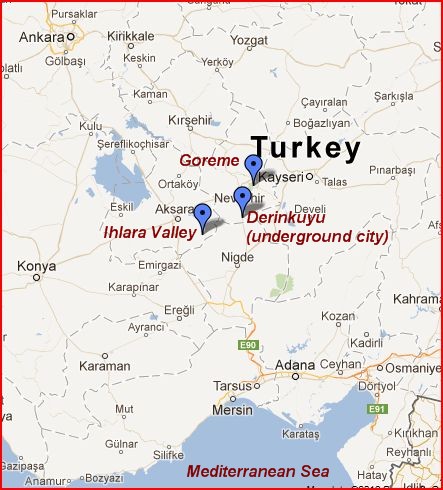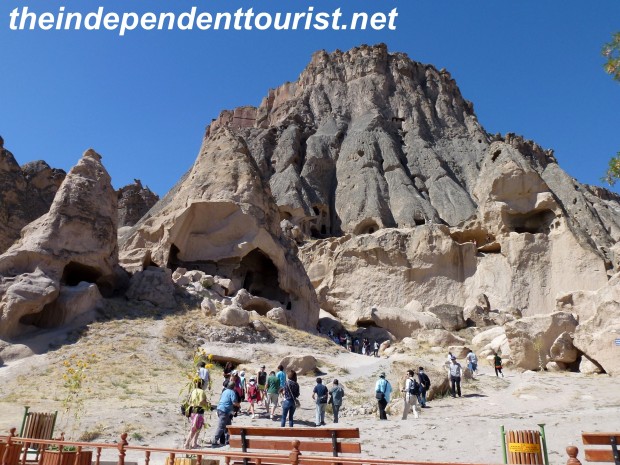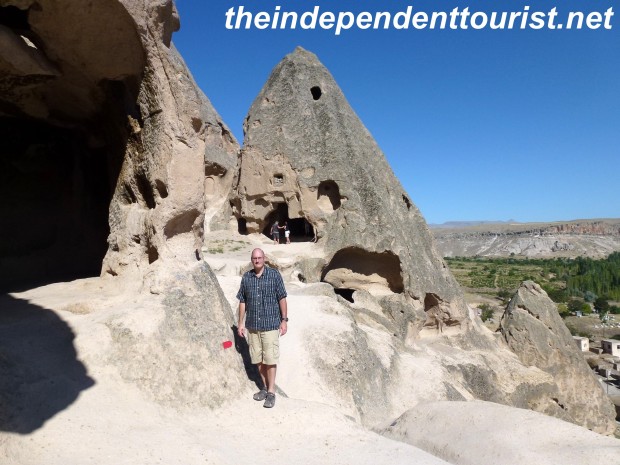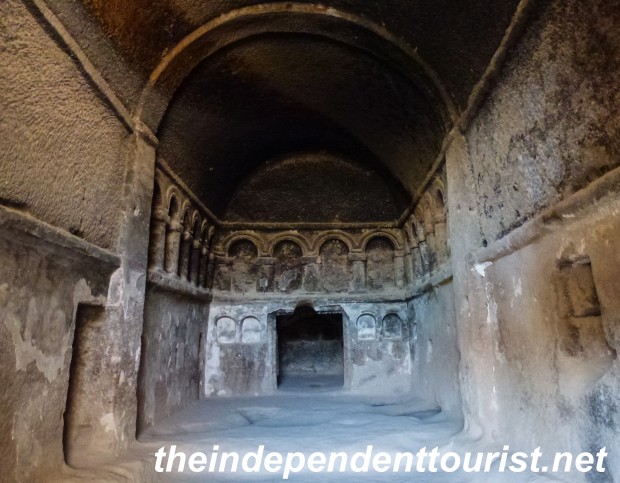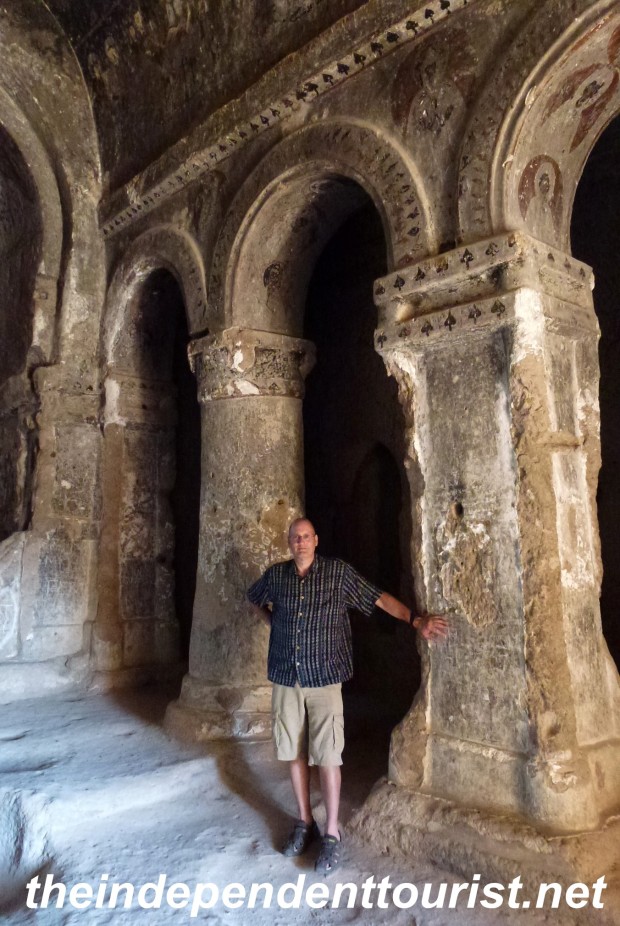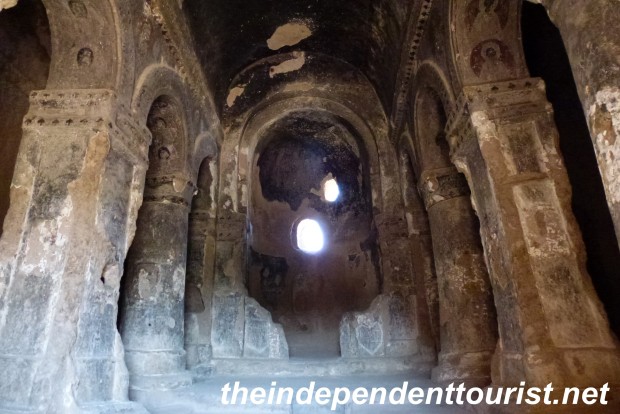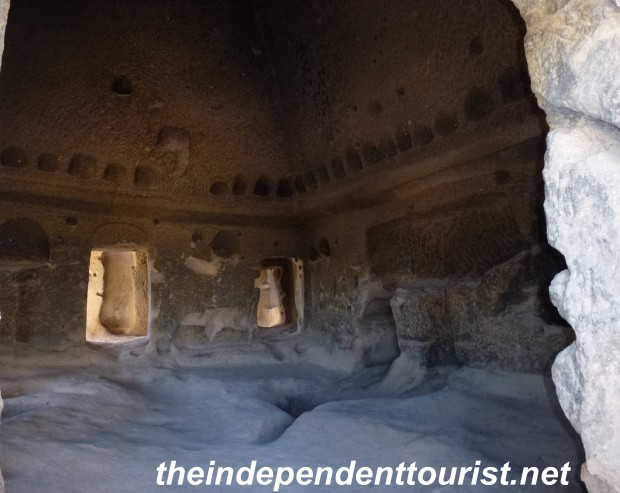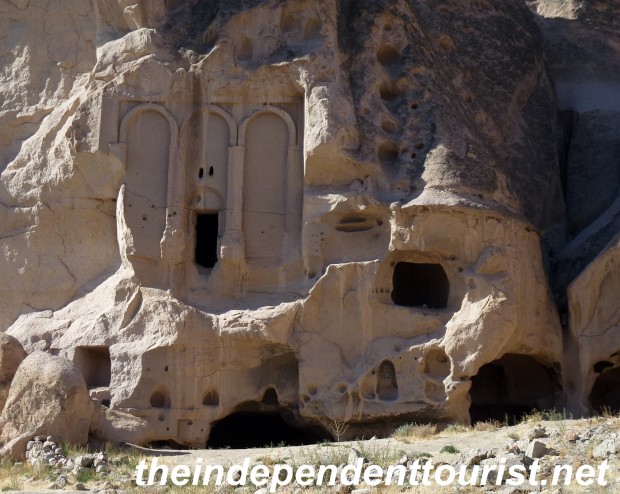We spent two very full days in Cappadocia, Turkey and we could have easily spent a week exploring this area. We had our own car, so we could choose the sites we wanted to visit. If you’re planning to take a tour of the area, you can arrange one locally and we noticed there are at least four main tour routes–going northwest, northeast, southwest and southeast from Göreme to cover the varied places of interest in the region. For a map of the sites we visited in Cappadocia, click here. For a map of sites visited in Turkey click here.

The ‘castle’ at Uchisar, near Goreme. This was a fortress and it sits at the top of a hill overlooking the area–rooms and passageways are carved out of the stone.
We stayed in the Canyon View Hotel right in Göreme, which was converted from an old church and built right into the hillside. It’s a decent hotel, and a short walk to the main shopping and dining areas. Göreme itself is a very pleasant and scenic town nestled among the “fair chimney” rock formations of Cappadocia, and a perfect home base during your visit.
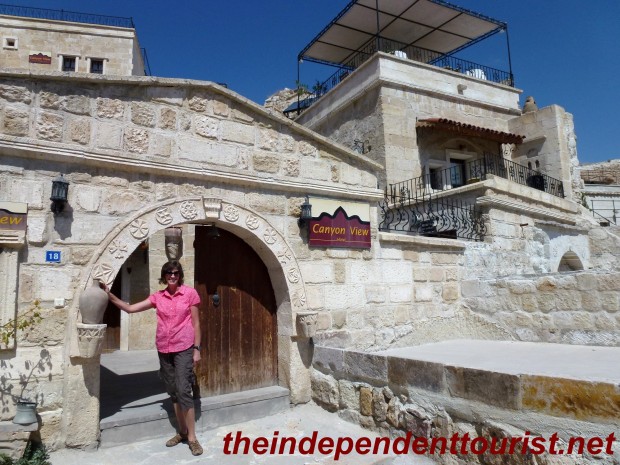
Exterior view of our hotel in Goreme. We ate breakfast on the terrace in the upper right-great view!
We visited the Open Air Museum in Göreme on our first day, after our exhilarating balloon ride. The Open Air Museum, which is a collection of rock-cut churches along a path in the Göreme Valley, is just a kilometer or so outside the town—we walked to it from our hotel. The Göreme Valley holds the greatest concentration of Byzantine rock-cut churches in Cappadocia. Originally this area was a settlement for 20 Byzantine monks, then became a pilgramage site in the 17th century.

A view of the Gorme Open Air Museum–a path winds among the rock formations and rock-cut churches and other rooms.
It seemed that the churches we visited mostly date from the 12th century. This area was a center for religious thought and life from the 3rd and 4thcentury onwards. One can get a feel for the life of the monks with all the various types of rooms—storage areas, eating areas, kitchens and of course the chapels.
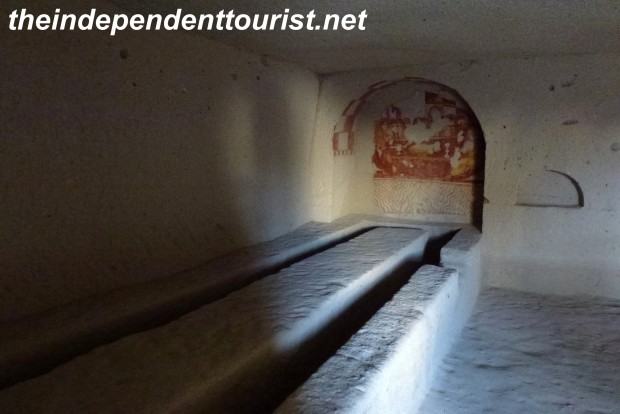
The monks’ eating area–they would sit on the outer edge and use the table in the middle. Not a lot of leg room!
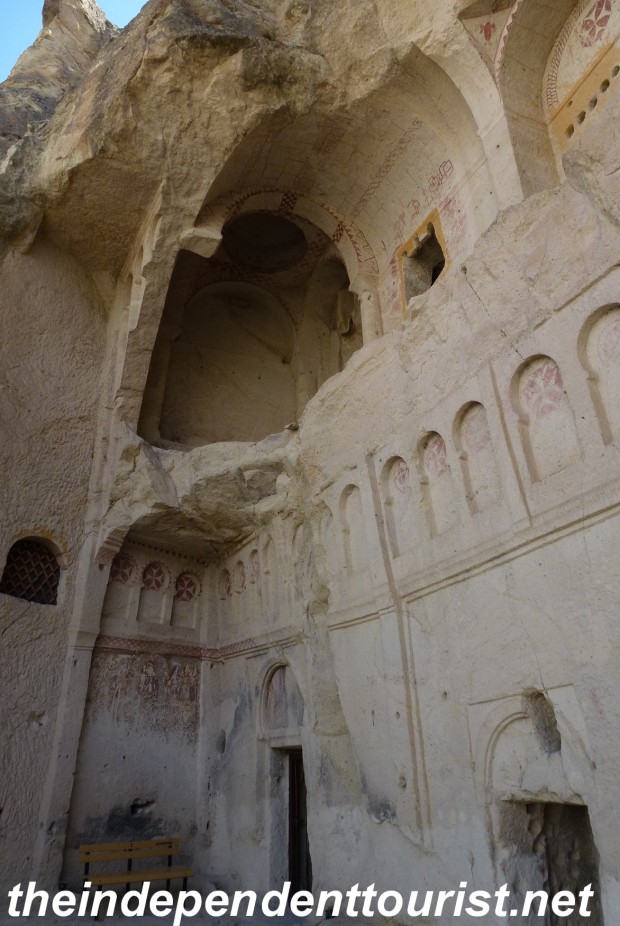
The Karanlik (Dark) Church–behind the wall is a beautiful chapel with well-preserved frescoes. Note how a part of the chapel is now exposed since the rock exterior has crumbled and eroded away. (Dates from end of 12th century).
Many of the chapels contain frescoes of scenes from the Bible, especially the life of Christ and acts of various saints. In some cases the frescoes are extremely well-preserved (with little daylight to damage them). Don’t miss the “Dark Church” (so-called since it has only one small window), the vivid frescoes look like they were painted yesterday. This church requires a separate entrance fee. Photos are allowed in some churches, but not in the churches with the best frescoes. Don’t miss the Buckle Church (Tokali Kilise) outside the main musuem–just across the road. It is large and one of the finest churches in Goreme. Your ticket for the Open Air Museum includes this church. Unfortunately, I was not allowed to take pictures inside.

Interior of the St. Barbara Chapel. The chapels vary greatly in the detail of the artwork and frescoes.
The Open Air Museum is a UNESCO World Heritage Site, and the entrance fee is 15 Turkish Lira (TL) per person and another 8 TL for the Dark Church (the exchange rate is about 1.8 TL per USD). There are well-marked walking paths to the various chapels in the valley with explanatory signs posted at each one. The Museum is open from 8 am to 7 pm April – October, and 8 am to 5 pm November – March. Allow at least two hours to visit the Open Air Museum.
References: Area brochures, posted informational signs, Lonely Planet’s Guide to Turkey 2010, DK Eyewitness Travel Guide to Turkey 2008.




